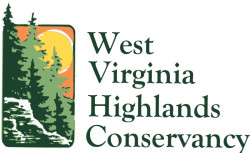By John McFerrin
On April 10, 2019, President Trump signed the Executive Order on Promoting Energy Infrastructure and Economic Growth. Its goal is to speed up the construction of oil and gas pipelines.
The first section of the Order sets out its purpose. It is nothing that anyone who has listened to President Trump and his administration for the past two years would find surprising. It is a celebration of the oil and gas industry, its importance in the economy, and the importance of having a “robust” oil and gas industry. Although there is no evidence that it was copied from the promotional materials of the oil and gas industry, its tone is such that it could have been.
The first section identifies the problem as inefficiencies and delays in the approval of “infrastructure” (aka pipelines).
The first section does end with this sentence: “By promoting the development of new energy infrastructure, the United States will make energy more affordable, while safeguarding the environment and advancing our Nation’s economic and geopolitical advantages.” Coming at the end of this paean to the oil and gas industry, this first reference to “safeguarding the environment” is a surprise and sounds like an afterthought.
The second section sets forth the policy of the United States: get those pipeline approved. It is couched in language such as “efficient permitting processes and procedures” and “timely action on infrastructure projects” but the sense of it is clear: move those applications, get those pipelines approved.
The third section of the Order gets down to specifics on what the President thinks the problem is: those pesky states are too closely reviewing pipeline projects.
Under the Clean Water Act, it is up to the Army Corps of Engineers to approve the crossing or filling of streams or wetlands. Although it is mainly the role of the Corps of Engineers, states have a role to play too.
Even with the approval of the United States Army Corps of Engineers, the projects still have to have the approval of the states where the projects would be located. The states’ duty is to examine both the crossings themselves and the water quality impacts outside the crossings. Before the pipelines could go forward, those states had to certify that the projects would not degrade the waters of that state or cause a violation of state water quality standards. These certifications are commonly referred to as 401 Certifications after Section 401 of the federal Clean Water Act which contains the requirement.
West Virginia is apparently already with President Trump’s program so far as 401certification is concerned. It is apparently willing to modify its own rules to facilitate approval of a pipeline. See the story on page 5.
Other states, however, have not been so cooperative. New York and Washington, for example, have used the review of 401 Certifications to block pipeline projects. The National Governors Association responded to the Order with a statement expressing concern at the attempt to limit the role of states in preserving their own water quality.
After identifying the problem and the result he seeks, President Trump directs specific actions. The procedures for doing 401 Certifications are all set forth in regulations and in guidance documents that direct states how to go about reviewing stream and wetlands crossings and making decisions on 401 Certifications. President Trump cannot just make an Order and “poof” all those regulations and guidance documents disappear.
Because of this, President Trump ordered the Environmental Protection Agency to review, and revise if necessary, its guidance documents and make them consistent with the policy goals of the Order (get the pipelines approved). It has to do this within 60 days. Within 120 days it has to publish revised rules to make them consistent with the policy goals of the Order. The rules, like all rules, have to go through the formal rulemaking process. The Order directs EPA to have that process completed and the rules in place within 13 months.
